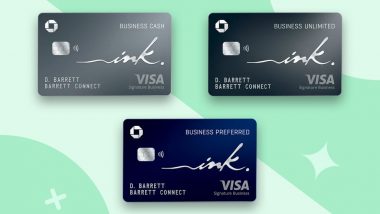Airline-issued credit cards were among the first rewarding credit cards ever offered, and they remain incredibly popular. Today, airline credit cards offer more than just frequent flyer miles that can be redeemed for flight awards. They can also offer many benefits, including priority boarding, elite status credit, and free baggage check-in.
Almost every carrier in the US offers at least one co-branded card, as do many foreign airlines that have a strong presence here. But sorting through the dozens of cards on offer can be confusing. Here’s how to choose the right airline credit card.
Should I have an airline card?
As popular as airline credit cards are, they are not for everyone. Those who don’t fly that often won’t get much benefit from perks like priority boarding or in-flight food and drink discounts. And while almost every airline credit card offers free baggage check-in, this perk doesn’t do much for business travelers and those who try to avoid baggage check-in.
Those who buy heavily discounted tickets from low cost carriers may not see the tremendous value in earning frequent flyer miles. However, the cards offered by these discount operators may offer benefits that eliminate the need to pay some of their additional fees.
Frequent travelers who already enjoy Elite status may not receive additional benefits from an entry-level airline credit card. This is because the perks offered by elite status and the perks offered by airline credit cards overlap in many ways. However, airline premium cards may offer next-level perks such as airport lounge access and credit for higher status levels.
Is the current signup bonus generous?
As a base level, almost all airline credit cards offer a check-in bonus, usually with enough miles for at least one award domestic round trip in economy class. Sometimes there are limited time offers that have enough miles for multiple domestic flights or even one overseas.
If you’re interested in a particular card, look at the typical card bonus offers as well as the highest offers to see if now is the right time to apply or if it’s worth waiting for a more generous welcome offer to be announced later.
How much can you earn in rewards?
Airline credit cards also offer miles (mostly reward points) for spending. You can expect all cards to offer at least 2 miles per dollar spent on airfare and 1 mile per dollar spent elsewhere. The most competitive cards now offer at least 3 miles per dollar spent on airline purchases, as well as bonus tiers. For example, some of the new airline credit cards now offer 2x more miles on other trips such as hotels, car rentals and restaurants. Others offer bonus miles for other everyday purchases such as gas or groceries.
How valuable are the awards?
When choosing an airline credit card, consider the quality of frequent flyer programs, which can vary greatly. For example, some airlines are now charging far more miles on award flights than they used to, especially on coveted international business class award tickets. Others charge expensive fuel surcharges (now called “carrier surcharges”) that can add hundreds of dollars to your reward tables.
Therefore, it makes sense to familiarize yourself with the frequent flyer program before applying for an airline credit card. A good way to find out the value of airline miles is to search for specific flights and see how many miles you need for an upcoming booking, and if there are any excessive surcharges.
Which airline do you fly with the most?
Many air travelers opt for a credit card issued in conjunction with the airline they use most frequently. This can make a lot of sense as you can earn miles that are easier for you to redeem and enjoy more benefits when you fly a lot.
However, sometimes it can be a good idea to choose a card from an airline that you don’t fly that often. For example, you can earn miles that can be used for a special trip to a destination not served by the airline you normally fly. Also, the airline that is most convenient to you may not have a great frequent flyer program, which doesn’t give you much reason to earn more miles with a credit card.
Some travelers live in cities dominated by one airline and their choice of credit card may be obvious. But others live near smaller airports with no hubs or airports with healthy competition, and they tend to book flights with many airlines. Those who live in urban centers such as New York, Los Angeles, and Washington, DC enjoy extensive air service to several airports.
Which alliance does the airline belong to?
Some airlines have an extensive list of partners, and earning miles with that airline may unlock the rewards you want on flights with other carriers. So one way to choose an airline credit card is to compare the alliances they belong to. There are three major global aviation alliances, and each of the three major traditional carriers belongs to one of them.
American Airlines is one of 14 members of the oneworld alliance, which includes airlines such as Alaska, British Airways, Japan Airlines, Qantas and Qatar. Delta is a member of the SkyTeam alliance, which includes 18 airlines such as Air France, KLM, Korean Air and China Airlines. United is one of 26 carriers in the Star Alliance, which includes Air Canada, Air China, Lufthansa, Singapore and Turkish.
If there is a specific airline you are hoping to redeem miles on, you can usually earn miles with any airline in the same alliance. Be aware that some airlines have additional partners that are not part of any alliance.
Several foreign airlines offer credit cards to US residents, including British Airways, Air France/KLM, Air Canada and Lufthansa. You can earn miles with these cards and use them on domestic flights of partner airlines. For example, Chase British Airways Visa Signature Card rewards can be used on flights operated by British Airways’ oneworld partner American Airlines.
Do you take advantage of additional benefits?
The next way to choose an airline credit card is to explore the benefits offered. Free checked baggage can be a regular benefit, but while some cards offer this benefit to up to nine people traveling on the same booking, others only offer it to the cardholder and one companion. Many cards offer perks such as priority boarding, an airport lounge pass or membership, and discounts on in-flight purchases.
One of the most valuable potential perks is elite status credit. This benefit is usually only earned by purchasing tickets and flying with an airline, but some cards offer status credit. These credits are usually awarded to the highest spenders, but they can be the key to reaching the next level of status when valuable perks such as first class upgrades come into play.
How much are you willing to spend on the annual fee?
Ultra-premium airline credit cards offer all-inclusive benefits, but they come at a cost, with annual fees ranging from $450 to $695. If you pay such a fee, make sure you get your money’s worth. For example, top tier airline credit cards will always offer airport lounge access, but vary in the number of guests allowed.
Some airlines offer free cards with very few benefits and minimal chances of earning bonus miles. Mid-tier cards with an annual fee of just under $100 are more common. These cards typically offer free baggage check-in, priority boarding, and discounts on in-flight purchases.
What if your airline offers multiple credit cards?
Once you have decided which airline you want to get a credit card from, you may still be faced with multiple cards to choose from. For example:
- American Express offers four versions of its Delta SkyMiles credit card for consumers and three versions for small business users.
- Chase offers four consumer versions of its United MileagePlus cards and one business card.
- Citi offers three versions of its American Airlines AAdvantage card for consumers and one for small business owners.
- Barclays also offers three versions of its American Airlines Aviator cards for consumers and one for small business owners.
- Chase offers three consumer versions of its Southwest Airlines Rapid Rewards cards and two versions for small business owners.
Choosing a credit card within one airline is simply a matter of weighing the features offered against the cost of the annual fee. Take a look at the welcome bonus, the number of miles earned for spending and the value of the benefits offered. In most cases, you will find that the cost of these three components exceeds the cost of an airline credit card with an annual fee in the $100 range, making no-fee cards a poor choice. But only the most frequent flyers who value airport lounge memberships will be in the market for cards with annual fees ranging from $450 to $695.
Fortunately, new airline credit cards are being introduced, with annual fees ranging from $100 to $550, with enticing benefits and rewards. For example, Chase’s Southwest Rapid Rewards® Priority Credit Card has an annual fee of $149, while Chase’s United Quest℠ Card and Delta SkyMiles® Platinum American Express Card have a $250 annual fee.
bottom line
Everyone knows that having an airline credit card can help you earn award flights. But what’s less valuable is that these cards offer many perks that can really make your trip more enjoyable and affordable. After spending some time comparing the costs and benefits of airline credit cards on offer, you will be able to choose the perfect card for your needs.
*All information about the Southwest Rapid Rewards® Priority Credit Card was self-assembled creditcards.com and has not been reviewed or approved by the issuer.
Editorial disclaimer
The editorial content on this page is based solely on the objective judgment of our contributors and is not based on advertising. It was not provided or ordered by credit card issuers. However, we may receive compensation when you click on links to our partners’ products.


